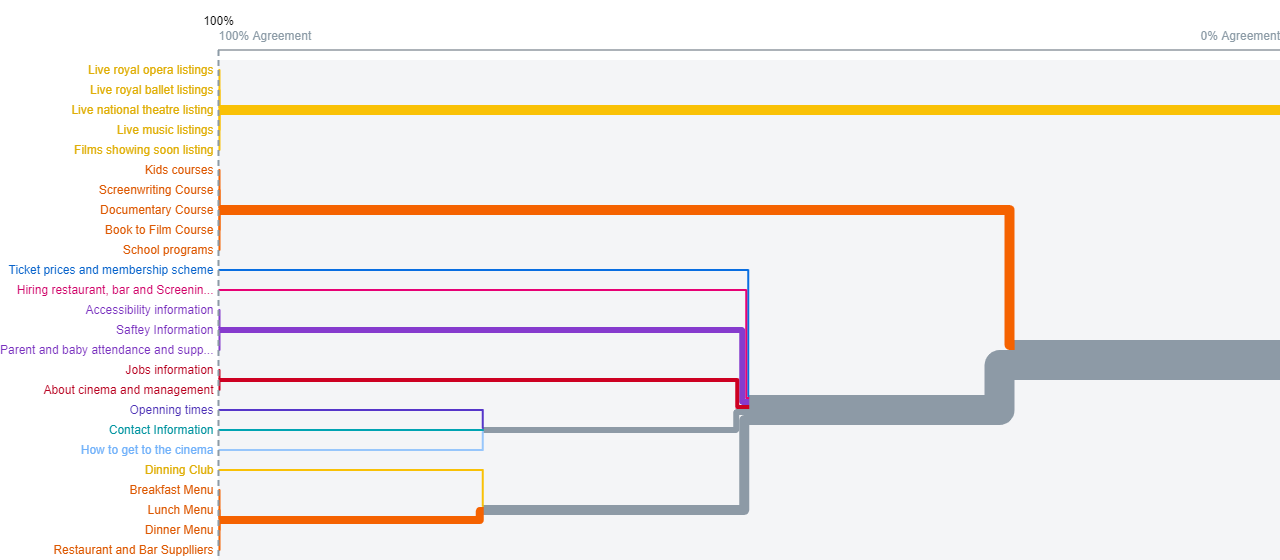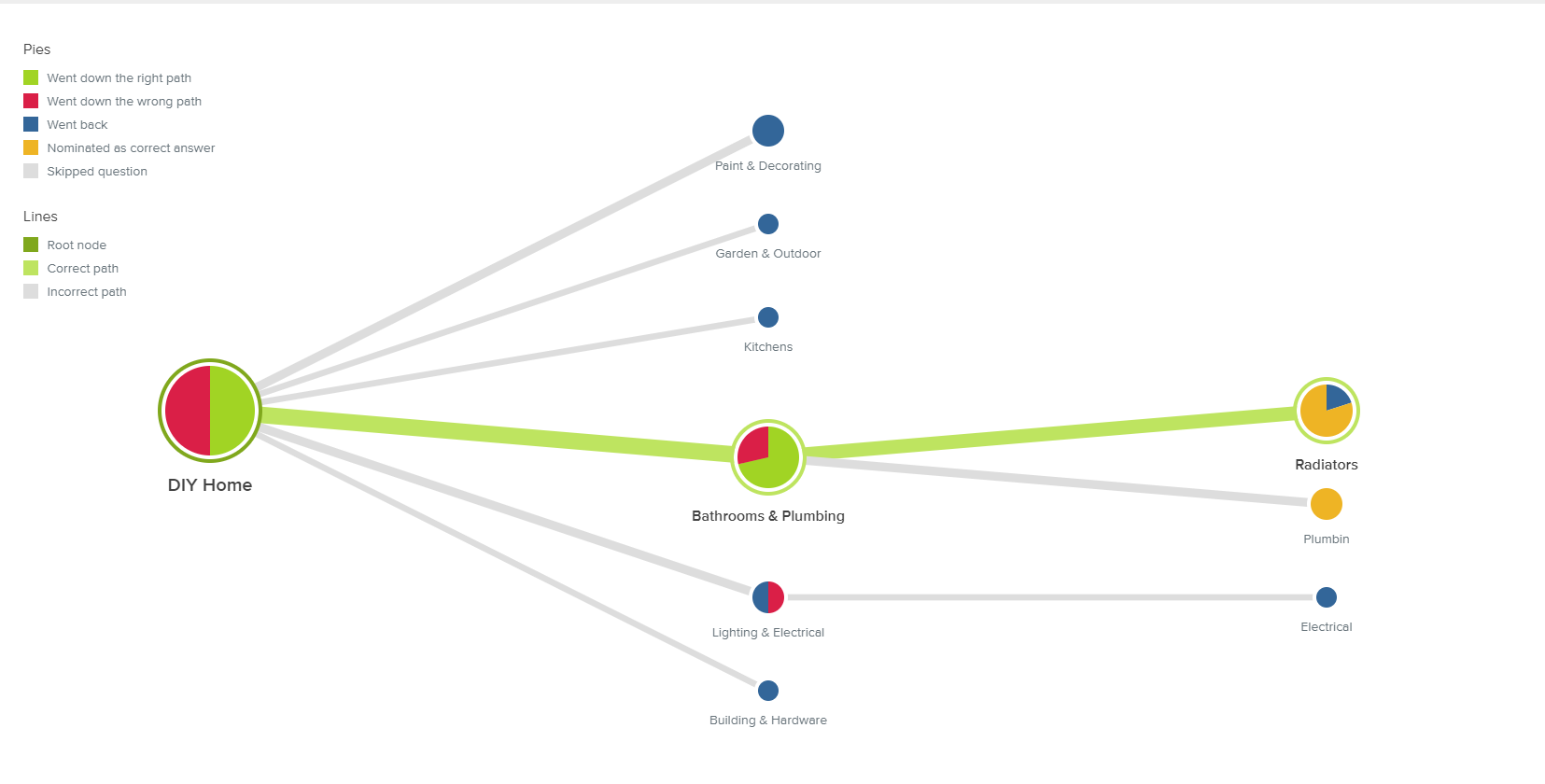Design navigation menus and link hierarchies that match users assumptions and support navigation.
Card sorting, tree testing and first-click tests are complementary methods for guiding and testing navigation designs (aka information architecture). These are relatively quick and inexpensive methods that can be carried out using online testing tools without a moderator.
Click the links or scroll down to learn more about:
How Can I Help?
- Advise on a research plan given your research goals and budget
- Design and setup testing tasks using an online platform
- Execute and monior data collection
- Analyse and interpret the data using quantitive methods
- Produce an actionable report and/or oral presentation
Card Sorting
What does it involve? Asking participants to sort a set of cards each containing a navigation label into groups. The groups of cards generated by participants are analysed using statistical methods (e.g. cluster analysis) and visualisations (e.g. dendrograms).
Why should you do it? To find out how users expect labels to be organized on an interface like navigation menus. Card sorting data can show how expectations are shared across users and whether there are problems with particular semantic categories or labels.
Card sorting is used for designing new navigation menus and page hierarchies with substantial information content. It can be used to improve the usability of products when navigation problems are identified.

Tree Testing
What does it involve? Participants are required to perform a series of search tasks on a linked tree structure in which child links of the tree are visible only when the parent link is clicked - like a navigation menu. While participants carry out the task, their search times, success rates and search paths are recorded for analysis.
Why should you do it? To test the findability of information in a labelled tree structure. It can reveal the success and the ease with which participants find target information and what labels they have issues with.
Tree testing can be used to evaluate a new or modified navigation menu. It should be used to evaluate designs produced from card sorting.

First-click Testing
What does it involve? Users are presented with an interface image or mockup and asked where they would click to perform a given specified task. The selected item and time to click are analysed to determine whether users will correctly click on the correct item, how readily the decision can be made and what incorrect choices do users make. First-click tests are normally conducted online using testing platforms such as Optimal Workshop.
Why should you do it? First click tests are an effective method to evaluate the navigation of webpage or other user interface designs. It's considered a useful measure of behaviour because research has found that 87% of participants who clicked correctly on their first click complete their task. It is also a low-cost option that is easy to administer using unmoderated online testing platforms.